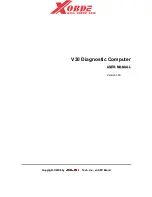
32-bit Memory Expansion Bus
The 32-bit-memory expansion bus optimizes the memory subsystem
to take advantage of the 32-bit architecture of the 80386. The PEM-
2530 mainboard and PEI-306 RAM Board allow for the configuration
of extended local memory up to 16MB. This bus is not intended to be
a general-purpose, industry standard 32-bit bus. It is simply a
mechanism to optimize the performance of the PEM-2530 memory
subsystem for the 80386 architecture.
32-bit Memory Expansion Bus Signals
• D0, D1, D2, D3, D4, D5, D6, D7
These bidirectional signals should be driven during 32-bit memory
access when qualified by the SBEO signal going active.
• D8, D9, D10, D11, D12, D13, D14,015
These bidirectional signals should be driven during 32-bit memory
access when qualified by the SBEl signal going active.
• D16, D17, D18, D19, D25, D21, D22, D23
These bidirectional signals should be driven during 32-bit memory
access when qualified by the SBE2 signal going active.
• D24, D25, D26, D27, D28, D29, D30, D31
These bidirectional signals should be driven during 32-bit memory
access when qualified by the SBE3 signal going active.
• MAO-MA7,1MA8,2MA8, MA9
These output signals address memory devices on the 32-bit memory
bus.
• SBEO
This output signal (active low) indicates when the 32-bit memory board
should operate on DO through D7.
28
Chapter 6: Appendix
Summary of Contents for 386/25
Page 1: ...KEEN 2530 25MHz 286 SYSTEM User s Manual ...
Page 17: ...System Overview Chapter ...
Page 39: ...Setting Up Your System ...
Page 66: ...Operating Your System Chapter ...
Page 85: ...Keyboard Chapter ...
Page 95: ...Troubleshooting Chapter ...
Page 103: ...Appendix Chapter ...
Page 118: ...Note means ON and means OFF ...
Page 119: ...Note means ON and means OFF ...
Page 134: ...Glossary Chapter ...










































